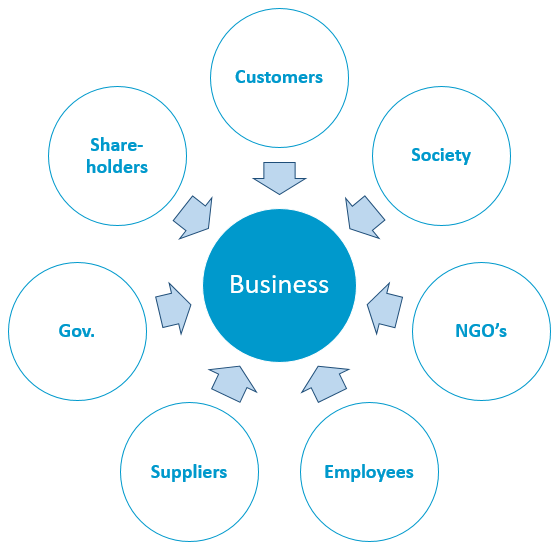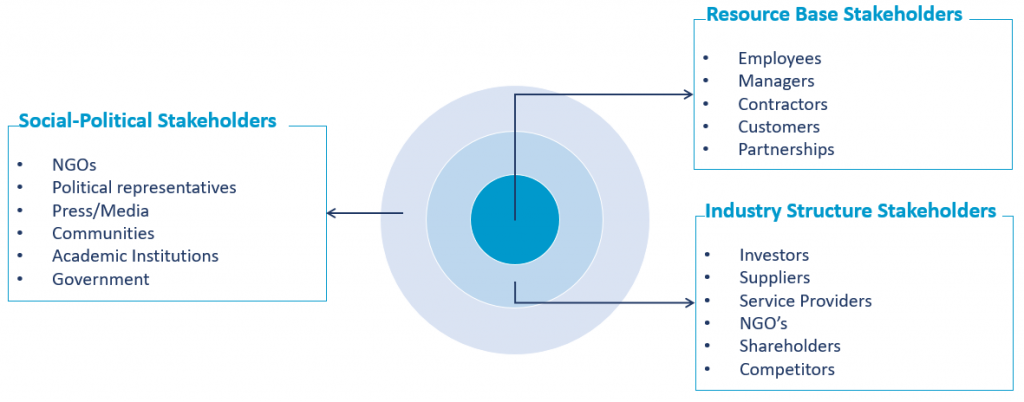Difficulty: Time:
What is Stakeholder Identification?
Stakeholder identification is a systematic process done in order to recognize who the people, groups or institutions are whose you interests you should take into account when trying to develop and implement various plans, actions, policies, or programs.
Why are they important you may ask? When certain groups aren’t taken into account, when they aren’t heard, or when they are forgotten it is likely that you may have external problems arise. This can be anywhere from being put into the spotlight by various non-government organizations (NGO’s) by finding yourself the the foot of a protest, in a newspaper, or even on the news painted in a picture which may be damaging to your reputation. This could lead to scandals, consumer backlash towards your brand, and for public companies a dropping stock price.
What is a Stakeholder Identification used for?
Stakeholder identification is a first step in the Stakeholder Analysis process where you identify the various parties which are in some way influenced or affected by an outcome, positive or negative, of anything that you may do.
In practice it can be done in various parts of the business. It could be done at strategic levels, but also in project management or in public relations. In project management it should be done when projects are being considered which will have some sort of impact on the community, such as an airport. In public relations it should definitely be considered in general when trying to formulate the messages to be communicated to various different stakeholders.
How do you use it in practice?
Identification of stakeholders is an organized and systematic brainstorm exercise to find out who the parties are whose interests you should consider. This can be done either independently or in a group or team. Some questions which could help guide you, or your workshop is to propose the following:
- Who are the parties that are interested in the intended action? What role do they play?
- Which parties may be adversely impacted?
- Who are the beneficiaries of the action, who would benefit from the initiative?
- Who has the power to influence, or impact the initiative?
Having the brainstorm exercise is a good first step to collect a complete, and exhaustive list of stakeholders. For critical projects or initiatives, it may even be beneficial to invite not just your team but possible stakeholders who may be involved into the brainstorm. This will minimize the chance that you may have missed important stakeholder groups.
Once you have completed the brainstorming exercise, in order to reflect, make certain and prevent from forgetting any important stakeholder, you should go back and ask yourself the following questions:
- Have all the stakeholder groups been identified?
- Have you considered the interests of the vulnerable groups, especially the poor or the ones which may not have a voice?
- Have you listed all the potential supporters of the project or initiative?
- Have you listed all the potential opponents of the project or initiative?
- Are there any potential new stakeholders which may emerge as a result of the project or initiative?
 After the above has been done, it is worth while to group and categorize the stakeholders into a more organized setting. Though it can be done in multiple ways, we suggest that for the beginning you categorize them into the following groups:
After the above has been done, it is worth while to group and categorize the stakeholders into a more organized setting. Though it can be done in multiple ways, we suggest that for the beginning you categorize them into the following groups:
Resource Base: Primary or direct stakeholders are those who either directly benefit or are directly concerned with the initiative. They can include:
- End users
- Employees
- Contractors
- Trade or Labor Unions
- Customers
- Business partnerships
- Direct local community
Industry Structure: Are those who can be intermediaries in the process of product or service delivery to primary or direct stakeholders. These can include:
- Suppliers
- Local Business
- Service Providers
- Direct local authorities
- Special interest groups
- Non-government organizations (NGO’s)
- Shareholders
- Local media
- Competitors
Social-Political Arena: Are those that have an affect, or are affected by initiatives at the most external of levels. These are parties which are at the macro-level. They can include:
- State
- Government
- Various other regulatory authorities
- National/International Media
- Civil Society
- Investors
- Think tanks
- Academic Institutions
Note though, that these categorical participants are just an example. They are, more or less, a standard list. In some cases they can be interchanged within the other categories depending on initiative, strategy, or project.
Tips and Tricks (What to do and don’t do)
Example at a real use case
Below we have provided an example how you could use Porters Five Forces to develop potential strategic directions to focus on.







